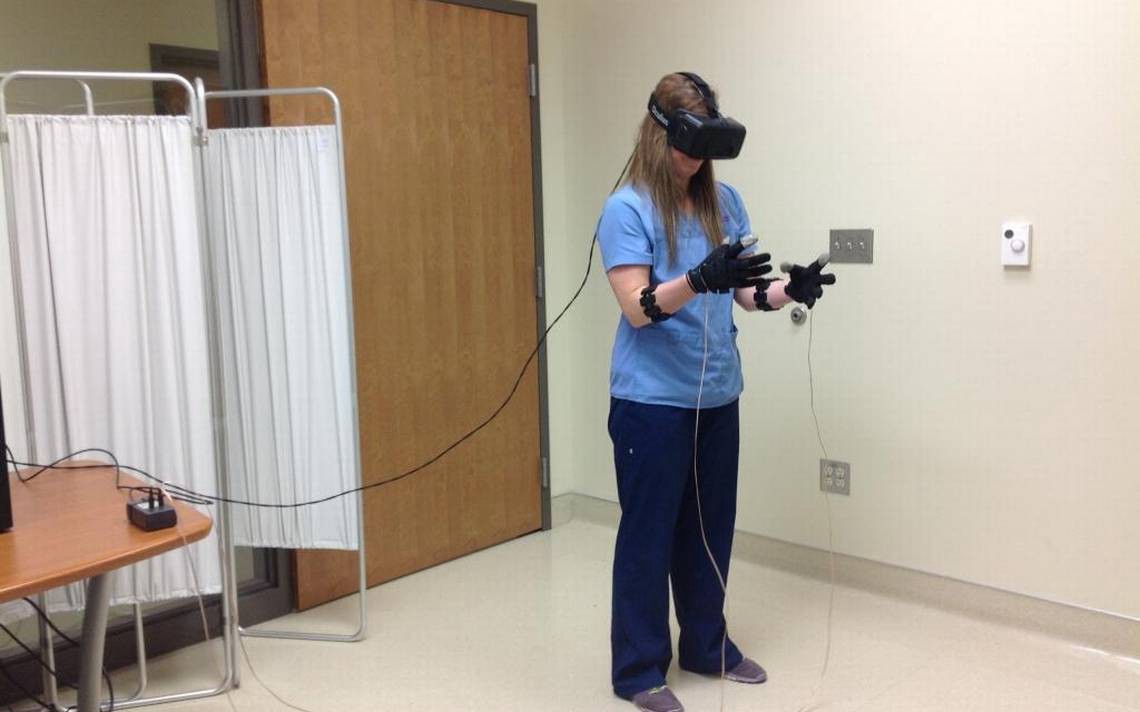Virtual reality in nursing education

This article looks at how virtual reality is used as a training tool as part of nursing education. But if you want a general overview of VR in nursing then visit our sister article entitled virtual reality in nursing.
Virtual reality is proving to play an important role in the education of nursing staff both in the UK and overseas. It is used to create simulations of nursing scenarios where the trainee has to carry out a series of tasks, for example, checking a patient’s vital signs. But it is also used to train how to react in an emergency, e.g. cardiac arrest.
Benefits of virtual reality in nursing education
The advantages of this include:
- Interactions with peers, tutors and other related personnel
- Controlled environment
- Builds upon familiarity with technology
- Learn by ‘doing’ rather than seeing
This is seen as a new way of learning; a move towards social interaction, communication and collaboration rather than the conventional ‘chalk and talk’ model. This system allows trainee nurses to engage and practise skills in a safe environment and with continual back up and support.
Plus there is a realisation that today’s nurses have grown up with technology and are avid users of social networking and other similar tools. They spend a great deal of time online and are comfortable doing so. Technology plays an important part in their lives and will continue to do so.
65% of Nursing Education Programs Adopting Virtual Simulation
All of this has led to the inclusion of virtual reality alongside clinical instruction and other traditional forms of teaching. The adoption of new forms of technology does not mean we should dispense with current methods of teaching as these have been invaluable over the years.
But technologies such as virtual reality can play an important role in teaching clinical skills to the next generation of nurses – and without causing harm to their patients. Plus it can instruct them in new types of procedures.
Leave a comment